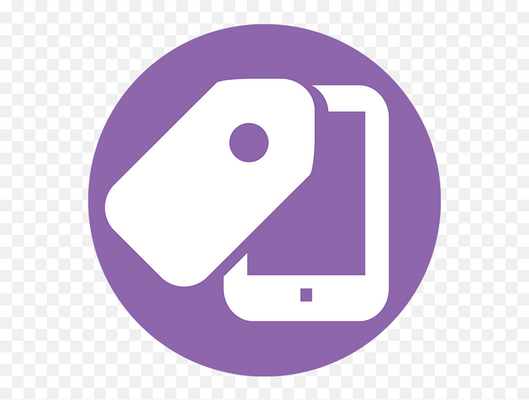
In today's fast-paced world, mobile prices have become an indispensable part of our daily lives. With the plethora of options available in the market, understanding mobile prices and making informed decisions can be a daunting task. This article provides a detailed guide to help you navigate the landscape of mobile prices, ensuring you get the best value for your money.
Mobile prices vary widely based on several factors, including brand, features, technology, and market trends. Here, we break down the key components that influence the cost of mobile phones.
Brands like Apple, Samsung, and Google are known for their high-quality products and innovative technology. These brands often command higher prices due to their reputation and the trust they have built with consumers. On the other hand, lesser-known brands might offer similar features at a lower price point, but they may lack the same level of reliability and customer support.
The hardware specifications of a mobile phone significantly impact its price. Key hardware components include the processor, RAM, storage capacity, and camera quality. High-end processors like the Qualcomm Snapdragon 888 or Apple's A14 Bionic chip enhance performance but also increase the cost. Similarly, higher RAM and storage capacities, such as 8GB RAM and 256GB storage, come with a premium price.
The display is one of the most critical aspects of a mobile phone. OLED and AMOLED displays offer superior color accuracy and contrast ratios compared to traditional LCD screens, making them more expensive. Screen size and resolution also play a role; larger screens with higher resolutions, like Quad HD+ or 4K displays, cost more.
Cameras have become a major selling point for mobile phones. Advanced camera features such as multiple lenses, high megapixel counts, and AI enhancements drive up the cost. For instance, phones with 108MP cameras or periscope zoom lenses are typically priced higher.
Battery capacity and charging technology are crucial for users who rely heavily on their mobile phones. Phones with larger batteries (e.g., 5000mAh) and fast charging capabilities (e.g., 65W fast charging) tend to be more expensive due to the advanced technology involved.
Mobile phones can be broadly categorized into three market segments: budget, mid-range, and flagship. Understanding these segments can help you make an informed decision based on your budget and requirements.
Budget phones are designed for cost-conscious consumers who need basic functionality. These phones typically range from $100 to $300 and offer essential features such as decent cameras, moderate processing power, and acceptable battery life. Examples include the Moto G series and Samsung Galaxy A series.
Mid-range phones strike a balance between performance and cost, offering better hardware and features compared to budget phones. Priced between $300 and $600, these phones often include better processors, higher RAM and storage capacities, and improved cameras. Popular models in this segment include the OnePlus Nord series and Google Pixel 4a.
Flagship phones represent the best technology and features available in the market. These phones are priced above $600 and include top-of-the-line specifications, premium build quality, and advanced features. Examples include the iPhone 12 Pro Max, Samsung Galaxy S21 Ultra, and Google Pixel 5.
When purchasing a mobile phone, it's essential to consider several factors to ensure you get the best value for your money.
Determine your primary use case for the phone. Are you a heavy gamer, a photography enthusiast, or a business professional? Understanding your needs will help you prioritize features such as processing power, camera quality, and battery life.
Consider the operating system and the ecosystem you're invested in. iOS and Android offer different user experiences and app ecosystems. If you already use other Apple products, an iPhone might integrate seamlessly with your devices. Similarly, if you rely on Google's services, an Android phone could be a better fit.
The build quality and design of a phone affect its durability and aesthetics. Premium materials like glass and metal provide a more luxurious feel but can be fragile. On the other hand, plastic builds might be more durable but less appealing.
Ensure the phone supports the necessary connectivity options such as 5G, Wi-Fi 6, NFC, and Bluetooth 5.0. These features can future-proof your device and enhance its functionality.
Check the warranty and customer support services offered by the manufacturer. Reliable customer support can be crucial in case of any issues with the device.
Navigating the world of mobile prices can be challenging, but understanding the factors that influence costs and knowing what to look for can make the process easier. Whether you're looking for a budget phone, a mid-range device, or a flagship model, there's a mobile phone out there that fits your needs and budget.
Q1: What is the best budget mobile phone available in 2024?
A1: The best budget mobile phone in 2024 is the Moto G Power, offering excellent battery life and decent performance for its price range.
Q2: How do flagship phones differ from mid-range phones?
A2: Flagship phones offer the latest technology, premium build quality, and advanced features, while mid-range phones provide a balance between performance and cost.
Q3: Are expensive phones always better?
A3: Not necessarily. Expensive phones offer premium features, but mid-range phones often provide similar performance for a lower price. It's important to choose based on your needs and budget.
Q4: What features should I prioritize when buying a new phone?
A4: Prioritize features based on your usage, such as camera quality for photography, processing power for gaming, and battery life for heavy usage.
Q5: How often should I upgrade my mobile phone?
A5: It's generally recommended to upgrade your phone every 2-3 years to stay up-to-date with the latest technology and ensure optimal performance.
|
|